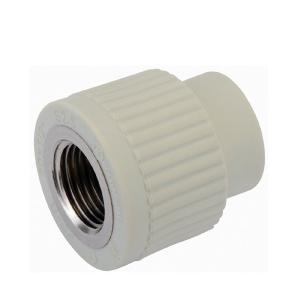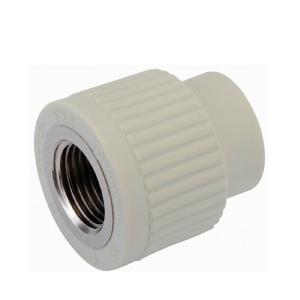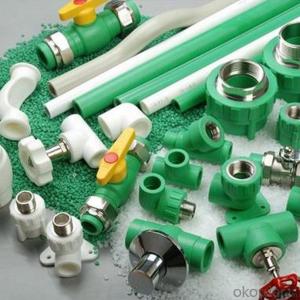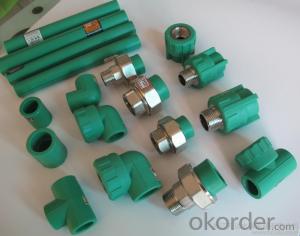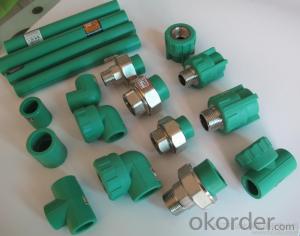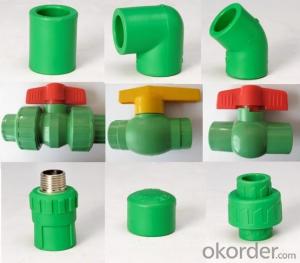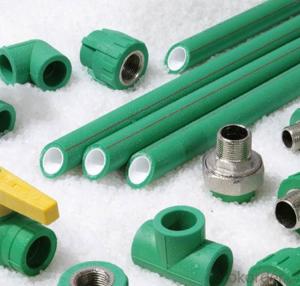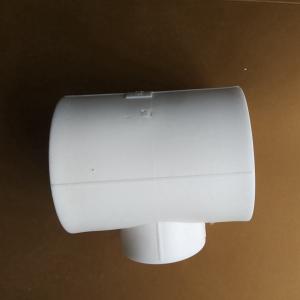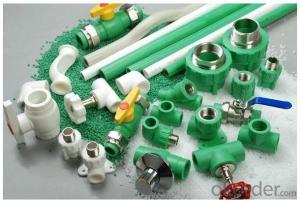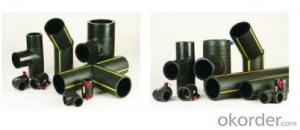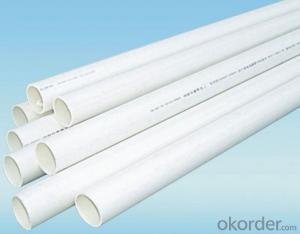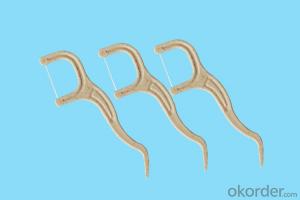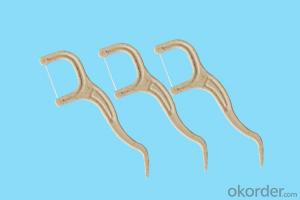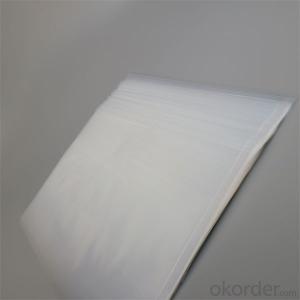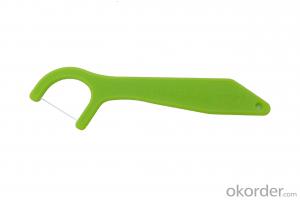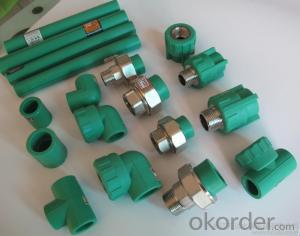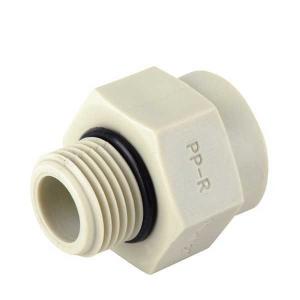PPR Female Coupling PPR Fittings China Supplier
- Loading Port:
- Ningbo
- Payment Terms:
- TT or LC
- Min Order Qty:
- 500 pc
- Supply Capability:
- 100000 pc/month
OKorder Service Pledge
OKorder Financial Service
You Might Also Like
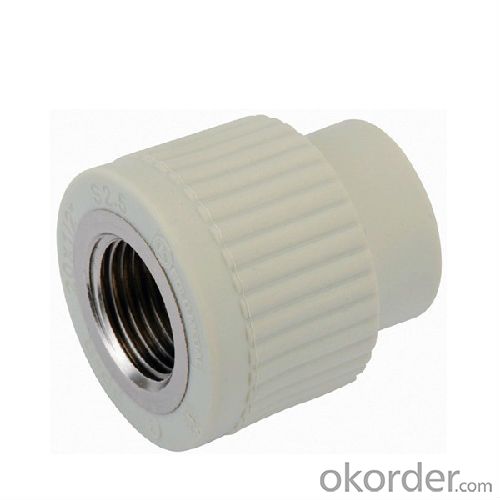
Quick Details
Material: Plastic
Technics: injection
Type: Coupling, Other Plastic Building Materials
Place of Origin: China (Mainland)
Model Number: DSB201~DSB206
- Connection: Welding
Shape: Equal
Head Code: round
Color: white/ green/ gray
Specifications
1. Material: Random Polypropylene (Hyosung R200P)
2. Pressure : 2.5MPa
3. Standard: GB/T 18742.3-2002, DIN8077/8078.

Packaging & Delivery
Packaging Details: PE bag and carton
Delivery Detail: 10 Days
Our Advantages:
1) Healthy, bacteriological neutral, conforming to drinking water standards
2) Resistant to high temperatures, good impact strength
3) Convenient and reliable installation, low construction expenses
4) Excellent heat-insulation property from minimum thermal conductivity
5) Lightweight, convenient to transport and handle, good for labor-saving
6) Smooth inner walls reduce pressure loss and increase flow speed
7) Sound insulation (reduced by 40% compared to galvanized steel pipes)
8) Light colors and excellent design ensure suitability for both exposed and hidden installation
9) Recyclable, environment-friendly, accords with GBM standards
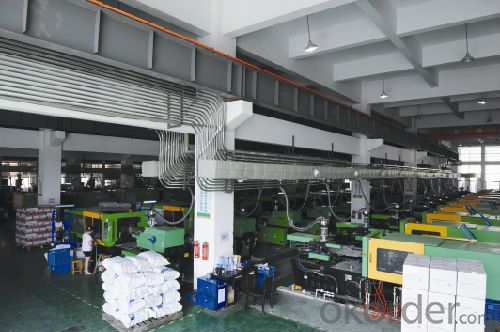
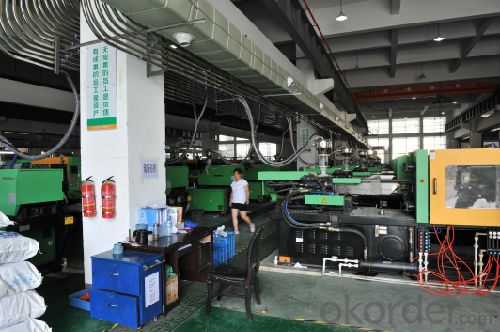
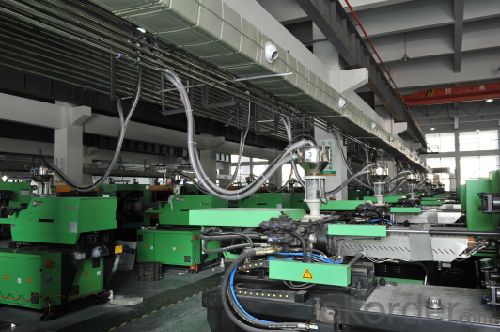

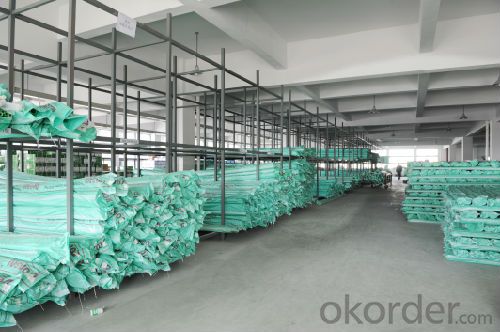

Applications
> Distribution for cool and hot water;
> Duct for drinkable water system;
> Pipes for kinds of high-temperature and low-temperature heating system;
> Pipes for heating and coolling settings in solar energy system;
> Connecting pipe for air conditioners.
- Q:Can plastic pipe fittings be used for both hot and cold water supply?
- Yes, plastic pipe fittings can be used for both hot and cold water supply.
- Q:Can plastic pipe fittings be used for cooling water in power plants?
- Yes, plastic pipe fittings can be used for cooling water in power plants. Plastic pipe fittings are commonly used in cooling water systems due to their corrosion resistance, lightweight nature, and cost-effectiveness. They are capable of withstanding the temperature and pressure requirements of power plant cooling water systems while providing efficient and reliable performance.
- Q:Are plastic pipe fittings resistant to earthquakes?
- Plastic pipe fittings can vary in their resistance to earthquakes. Some plastic pipe fittings, particularly those made from high-density polyethylene (HDPE), have been designed to be flexible and can withstand seismic activity to a certain extent. However, it is important to note that the overall seismic performance of a piping system depends not only on the fittings but also on other factors such as the type of pipe material, installation techniques, and support systems. Therefore, while plastic pipe fittings can offer some level of earthquake resistance, it is crucial to consult with engineers and follow appropriate guidelines to ensure the overall seismic reliability of the piping system.
- Q:Can plastic pipe fittings be used in hydroponic systems?
- Yes, plastic pipe fittings can be used in hydroponic systems. They are often preferred due to their durability, resistance to corrosion, and affordability. Plastic fittings are compatible with various types of piping commonly used in hydroponics, such as PVC and polyethylene tubing.
- Q:Can plastic pipe fittings be used for central vacuum systems?
- Yes, plastic pipe fittings can be used for central vacuum systems. Plastic fittings are commonly used in central vacuum systems because they are lightweight, durable, and resistant to corrosion. They provide a cost-effective and reliable option for connecting the various components of the system, such as the vacuum unit, inlet valves, and tubing.
- Q:How do plastic pipe fittings compare to polybutylene fittings?
- Plastic pipe fittings and polybutylene fittings are both commonly used in plumbing systems, but they have some differences. Plastic pipe fittings are typically made from PVC (polyvinyl chloride) or CPVC (chlorinated polyvinyl chloride), while polybutylene fittings are made from a type of plastic called polybutylene resin. In terms of durability, plastic pipe fittings are generally more resistant to chemicals, heat, and pressure compared to polybutylene fittings. Plastic fittings also tend to be less prone to corrosion, making them a more reliable option for long-term use. Polybutylene fittings, on the other hand, were widely used in residential plumbing systems in the past but have since fallen out of favor due to concerns about their long-term reliability. Polybutylene has been associated with issues such as brittle pipes, leaks, and ruptures, particularly when exposed to chlorine or other chemicals commonly found in water supplies. Overall, plastic pipe fittings are considered a safer and more durable choice for plumbing systems compared to polybutylene fittings. It's important to consult with a professional plumber or adhere to local building codes when selecting fittings to ensure the best choice for your specific plumbing needs.
- Q:Can plastic pipe fittings be used for cooling systems in data centers?
- Yes, plastic pipe fittings can be used for cooling systems in data centers. Plastic fittings are commonly used in various plumbing applications, including cooling systems. They offer advantages such as corrosion resistance, ease of installation, and cost-effectiveness. However, it's important to ensure that the plastic fittings chosen are suitable for the specific requirements and conditions of the cooling system in question.
- Q:What are the common maintenance requirements for plastic pipe fittings?
- Common maintenance requirements for plastic pipe fittings include regular inspection for any signs of wear, cracks, or leaks. It is important to ensure that fittings are properly tightened and secured, and any loose or damaged fittings should be replaced immediately. Regular cleaning and removal of any debris or blockages is also necessary to maintain optimal performance. Additionally, it is important to avoid exposing plastic pipe fittings to extreme temperatures or chemicals that may cause damage.
- Q:How long do plastic pipe fittings last?
- The lifespan of plastic pipe fittings can vary depending on factors such as the type of plastic, the quality of the fittings, and the conditions they are exposed to. However, on average, plastic pipe fittings can last anywhere between 10 to 50 years.
- Q:PVC what's the direct head of the outside pipe?
- The outer thread is also called the outer tooth directly. The thread and the tooth are the thread of the metal part of the pipe fitting. The outer thread is the outer thread of the pipe. It is the connecting pipe connecting the metal tube with the nonmetal (mainly PP-R, PVC and other plastic pipes).
1. Manufacturer Overview |
|
|---|---|
| Location | |
| Year Established | |
| Annual Output Value | |
| Main Markets | |
| Company Certifications | |
2. Manufacturer Certificates |
|
|---|---|
| a) Certification Name | |
| Range | |
| Reference | |
| Validity Period | |
3. Manufacturer Capability |
|
|---|---|
| a)Trade Capacity | |
| Nearest Port | |
| Export Percentage | |
| No.of Employees in Trade Department | |
| Language Spoken: | |
| b)Factory Information | |
| Factory Size: | |
| No. of Production Lines | |
| Contract Manufacturing | |
| Product Price Range | |
Send your message to us
PPR Female Coupling PPR Fittings China Supplier
- Loading Port:
- Ningbo
- Payment Terms:
- TT or LC
- Min Order Qty:
- 500 pc
- Supply Capability:
- 100000 pc/month
OKorder Service Pledge
OKorder Financial Service
Similar products
New products
Hot products
Hot Searches
Related keywords
